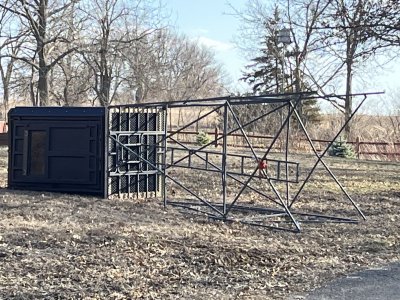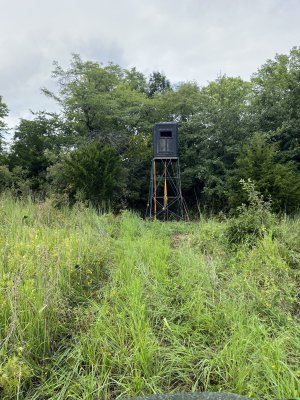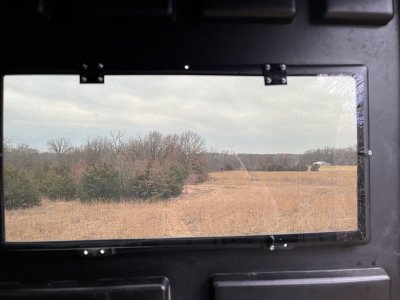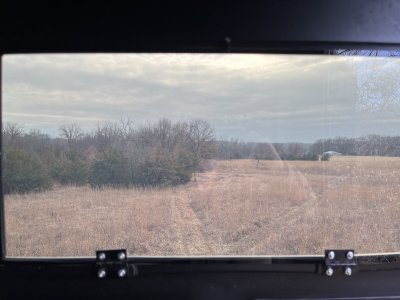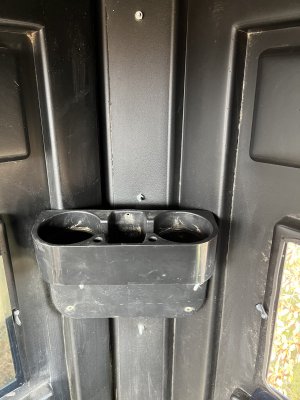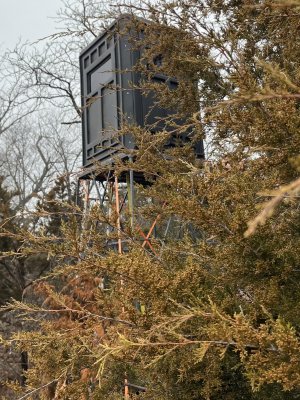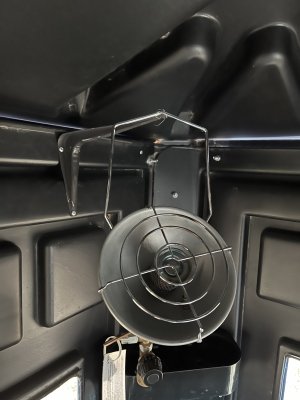356
5 year old buck +
On the way to work this morning I noticed that the storm that came through Missouri toppled over the south property tower stand. The stand was secured with four auger mounts about 18" into the ground in addition to the ground spikes that come with the tower. One auger was pulled out of the ground, and I can only assume the rains ahead of the storm must have really softened the ground before being hit by 60+ mph winds. Three augers were still in the ground. No straps broke, so I can only guess that once the one auger came out the vibrations allowed the straps to come off.
The bad news: One door hinge and one window broke--I've already ordered replacements. The chair I kept in the blind was the likely culprit of the damage. I am sure there will be some other tweaks required to get the stand ready for next season.
The good news, part A) The metal tower is intact, with only minor tweaking of two cross-bars. Part B) I was considering moving the stand to another location, so now I have the excuse to go ahead and make the move.
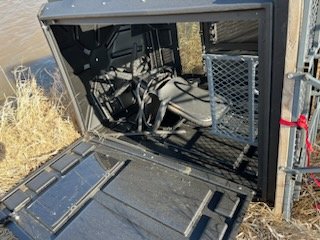
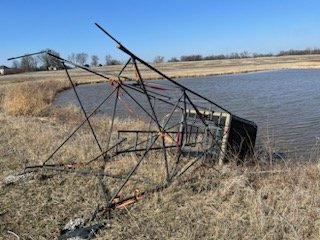
The bad news: One door hinge and one window broke--I've already ordered replacements. The chair I kept in the blind was the likely culprit of the damage. I am sure there will be some other tweaks required to get the stand ready for next season.
The good news, part A) The metal tower is intact, with only minor tweaking of two cross-bars. Part B) I was considering moving the stand to another location, so now I have the excuse to go ahead and make the move.


Last edited:
